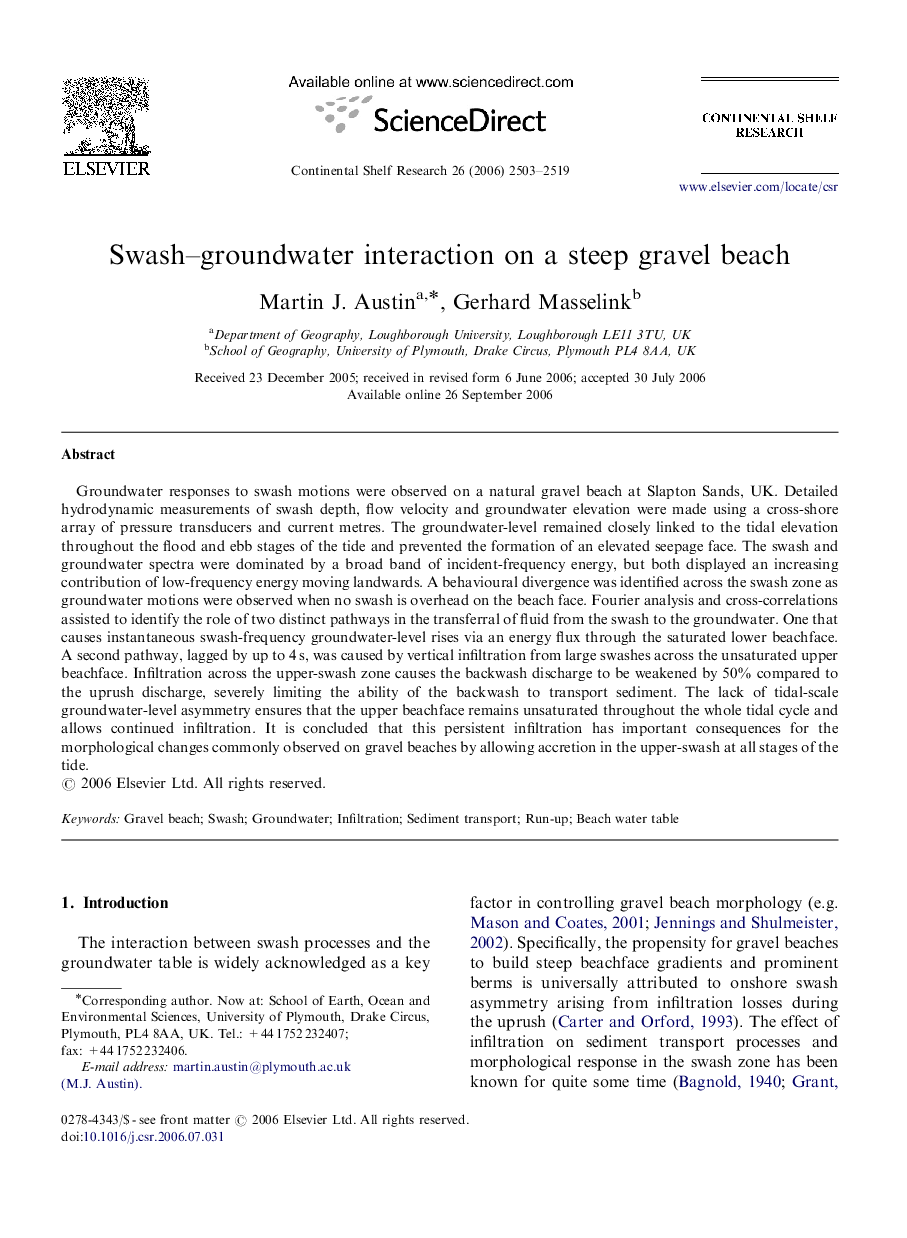| Article ID | Journal | Published Year | Pages | File Type |
|---|---|---|---|---|
| 4533854 | Continental Shelf Research | 2006 | 17 Pages |
Groundwater responses to swash motions were observed on a natural gravel beach at Slapton Sands, UK. Detailed hydrodynamic measurements of swash depth, flow velocity and groundwater elevation were made using a cross-shore array of pressure transducers and current metres. The groundwater-level remained closely linked to the tidal elevation throughout the flood and ebb stages of the tide and prevented the formation of an elevated seepage face. The swash and groundwater spectra were dominated by a broad band of incident-frequency energy, but both displayed an increasing contribution of low-frequency energy moving landwards. A behavioural divergence was identified across the swash zone as groundwater motions were observed when no swash is overhead on the beach face. Fourier analysis and cross-correlations assisted to identify the role of two distinct pathways in the transferral of fluid from the swash to the groundwater. One that causes instantaneous swash-frequency groundwater-level rises via an energy flux through the saturated lower beachface. A second pathway, lagged by up to 4 s, was caused by vertical infiltration from large swashes across the unsaturated upper beachface. Infiltration across the upper-swash zone causes the backwash discharge to be weakened by 50% compared to the uprush discharge, severely limiting the ability of the backwash to transport sediment. The lack of tidal-scale groundwater-level asymmetry ensures that the upper beachface remains unsaturated throughout the whole tidal cycle and allows continued infiltration. It is concluded that this persistent infiltration has important consequences for the morphological changes commonly observed on gravel beaches by allowing accretion in the upper-swash at all stages of the tide.
